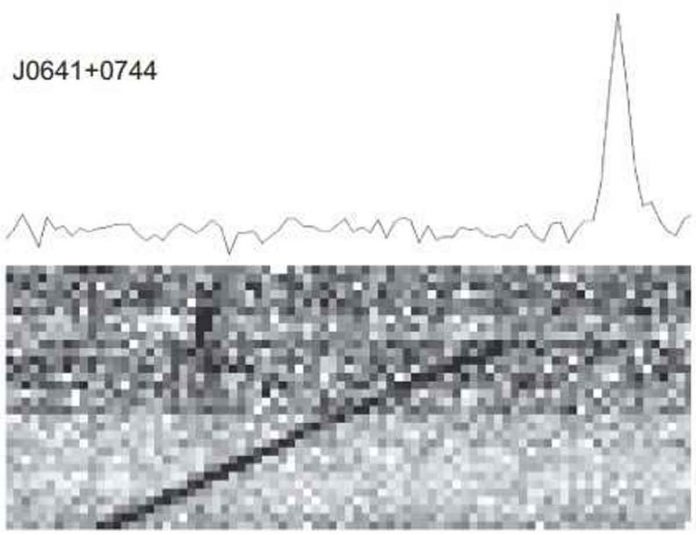Russian astronomers report the discovery of five new rotating radio transients (RRATs) using the Pushchino Radio Astronomy Observatory’s Big Scanning Antenna (BSA) (PRAO). The discovery was detailed in a paper published on the arXiv pre-print repository on July 22.
RRATs are a type of pulsar that emits sporadic radiation. The first of these objects was discovered in 2006 as sporadic appearing dispersed pulses with frequencies ranging from several minutes to several hours. However, the nature of these transients remains unknown. In general, they are assumed to be ordinary pulsars with strong pulses.
Because only a few hundred RRATs have been discovered thus far, astronomers are eager to find more of these transients in order to characterize them and learn more about their nature.
A team of astronomers led by PRAO’s Sergey Tyul’bashev recently analyzed data from September 2015 monitoring observations with BSA at 111 MHz. This resulted in the discovery of fifty-four pulsating sources, five of which were discovered to be new RRATs.
“We used data from a daily monitoring program to look for strong (SNR 7) pulses with DM = 3-100 pc/cm3 within a 15000 deg2 region of the northern sky…. Fifty-four pulsating sources were discovered at declinations 9o 42o. There are 47 known pulsars, five new sources, and two previously discovered transients among them “The researchers wrote about it in their paper.
J0319+1341, J0641+0744, J1329+1344, J1336+3346, and J1556+0110 were assigned to the newly discovered RRATs. Their dispersion measurements range from 8.5 to 52 pc/cm3. The peak flux density of their pulses was estimated to be between 4,500 and 13,000 mJy.
The dispersion measurements of these sources indicate that they are Galactic objects, according to the astronomers. They also have sporadic repeated pulses, which confirms their RRAT status.
The researchers attempt to explain why the five RRATs they report were not detected by previous observations. They assume that the flare rate of these transients is low enough that the total observation time in the transient directions in previous surveys was insufficient to detect even one flare.
“If this is the case, it demonstrates that the BSA’s lower sensitivity in transient searches is compensated for by its ability to conduct longer monitoring,” the paper’s authors wrote.
As a result, the researchers hope that longer monitoring will allow them to detect all RRATs with flares strong enough to exceed the BSA sensitivity threshold at least once every three days. They also stated that additional BSA observations could lead to the discovery of 200-300 new flare sources with strong pulses.

